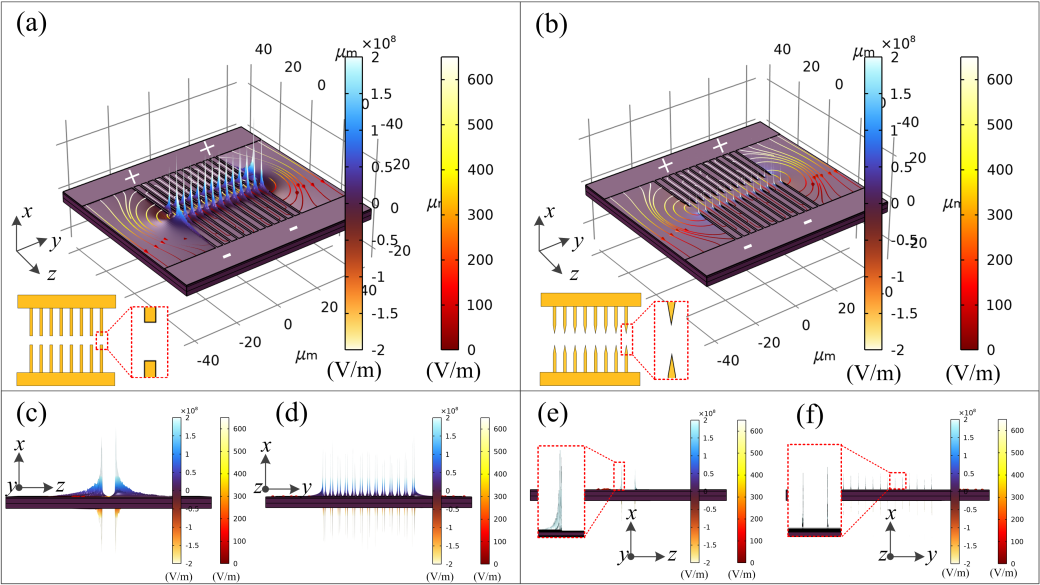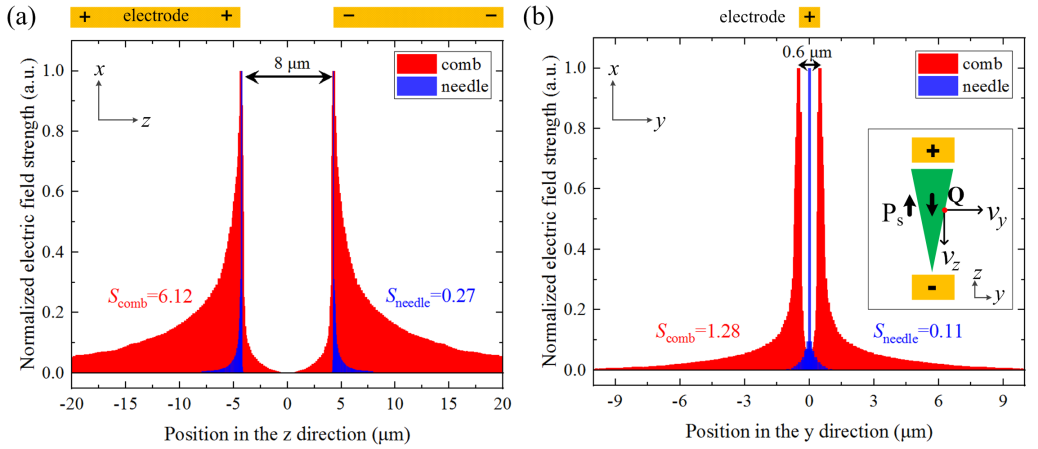Paper Download

OMedaSemi provide various lithium tantalate crystal ,you can click the following links to know its detailed spec:https://en.omedasemi.com/detail/147.html
This study investigates the periodic poling of thin-film lithium tantalate on insulator (LTOI) by applying a high-voltage electric field. The research focuses on optimizing the electric field distribution, poling time, and field strength to precisely control the duty cycle of the inverted domains, ultimately achieving the ideal value of approximately 50%.


Research Background
Lithium tantalate (LiTaO₃, LT) has a higher optical damage threshold and a shorter ultraviolet (UV) absorption edge compared to lithium niobate (LiNbO₃, LN), making LTOI a promising material for high-power and short-wavelength integrated photonics.
While periodic poling in bulk lithium tantalate has been extensively studied, the poling process in thin-film materials is more complex due to stress and strain effects.
Poling Electrode Design and Simulation
The study examines the effects of two different electrode shapes (comb-shaped and needle-shaped) on the electric field distribution, using the Miller-Weinreich model for analysis.
The results show that needle-shaped electrodes generate a more suitable electric field distribution for controlling the formation of uniform and adjustable inverted domains.
Experimental Process
Needle-shaped nickel electrodes were fabricated on LTOI using electron beam evaporation and photolithography, followed by the application of high-voltage pulses (up to 84-90 kV/mm) for poling.
By adjusting the electric field strength, poling time, and pulse number, periodic poling structures with different periods (3.0-5.0 µm) were successfully achieved.
Results and Characterization
Confocal second-harmonic (SH) microscopy and piezoresponse force microscopy (PFM) were used to characterize the inverted domain structures, confirming the completeness and uniformity of domain inversion.
Numerical analysis using MATLAB revealed that the standard deviation of the domain duty cycle was less than 4.8%, indicating high poling quality.
Conclusions and Applications
The research paves the way for the application of LTOI in high-power and UV-band nonlinear integrated photonic devices.
Future work will integrate the periodically poled structures with LTOI waveguides to develop efficient nonlinear optical devices.
This study successfully fabricated high-quality PPLTOI structures and optimized the poling process to achieve uniform and controllable domain structures. The findings hold significant importance for integrated photonics and nonlinear optics, particularly in high-power and UV-band applications.
OMeda (Shanghai Omedasemi Co.,Ltd) was founded in 2021 by 3 doctors with more than 10 years of experience in nanpfabrication. It currently has 15 employees and has rich experience in nanofabrication (coating, lithography, etching, two-photon printing, bonding) and other processes. We support nanofabrication of 4/6/8-inch wafers.